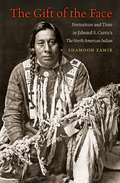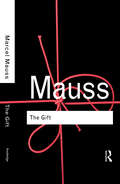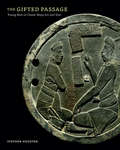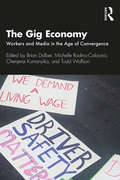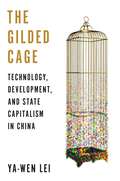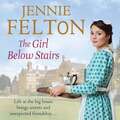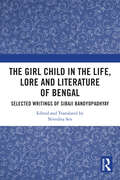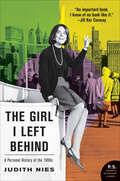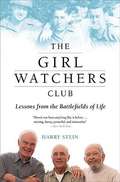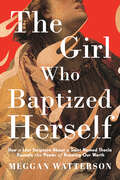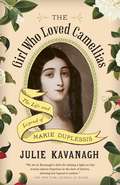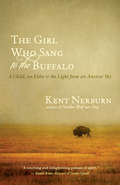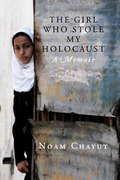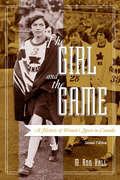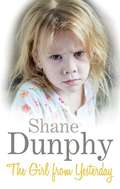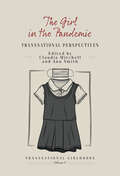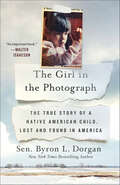- Table View
- List View
The Gift of the Face
by Shamoon ZamirEdward S. Curtis's The North American Indian is the most ambitious photographic and ethnographic record of Native American cultures ever produced. Published between 1907 and 1930 as a series of twenty volumes and portfolios, the work contains more than two thousand photographs intended to document the traditional culture of every Native American tribe west of the Mississippi. Many critics have claimed that Curtis's images present Native peoples as a "vanishing race," hiding both their engagement with modernity and the history of colonial violence. But in this major reappraisal of Curtis's work, Shamoon Zamir argues instead that Curtis's photography engages meaningfully with the crisis of culture and selfhood brought on by the dramatic transformations of Native societies. This crisis is captured profoundly, and with remarkable empathy, in Curtis's images of the human face. Zamir also contends that we can fully understand this achievement only if we think of Curtis's Native subjects as coauthors of his project.This radical reassessment is presented as a series of close readings that explore the relationship of aesthetics and ethics in photography. Zamir's richly illustrated study resituates Curtis's work in Native American studies and in the histories of photography and visual anthropology.
The Gift: The Form and Reason for Exchange in Archaic Societies
by Marcel Mauss W. D. HallsThe gift is a perfect example of what Mauss calls a total social phenomenon, since it involves legal, economic, moral, religious, aesthetic, and other dimensions. He sees the gift exchange as related to individuals and groups as much as to the objects themselves, and his analysis calls into question the social conventions and economic systems that had been taken for granted for so many years. In a modern translation, introduced by distinguished anthropologist Mary Douglas, The Gift is essential reading for students of social anthropology and sociology.
The Gift: The Form and Reason for Exchange in Archaic Societies (Routledge Classics)
by Marcel MaussIn this, his most famous work, Marcel Mauss presented to the world a book which revolutionized our understanding of some of the basic structures of society. By identifying the complex web of exchange and obligation involved in the act of giving, Mauss called into question many of our social conventions and economic systems. In a world rife with runaway consumption, The Gift continues to excite and challenge.
The Gifted Passage: Young Men in Classic Maya Art and Text
by Stephen HoustonIn this thought-provoking book, preeminent scholar Stephen Houston turns his attention to the crucial role of young males in Classic Maya society, drawing on evidence from art, writing, and material culture. The Gifted Passage establishes that adolescent men in Maya art were the subjects and makers of hieroglyphics, painted ceramics, and murals, in works that helped to shape and reflect masculinity in Maya civilization. The political volatility of the Classic Maya period gave male adolescents valuable status as potential heirs, and many of the most precious surviving ceramics likely celebrated their coming-of-age rituals. The ardent hope was that youths would grow into effective kings and noblemen, capable of leadership in battle and service in royal courts. Aiming to shift mainstream conceptions of the Maya, Houston argues that adolescent men were not simply present in images and texts, but central to both.
The Gig Economy: Workers and Media in the Age of Convergence
by Brian Dolber; Michelle Rodino-Colocino; Chenjerai Kumanyika; Todd WolfsonThis edited collection examines the gig economy in the age of convergence from a critical political economic perspective. Contributions explore how media, technology, and labor are converging to create new modes of production, as well as new modes of resistance. From rideshare drivers in Los Angeles to domestic workers in Delhi, from sex work to podcasting, this book draws together research that examines the gig economy's exploitation of workers and their resistance. Employing critical theoretical perspectives and methodologies in a variety of national contexts, contributors consider the roles that media, policy, culture, and history, as well as gender, race, and ethnicity play in forging working conditions in the 'gig economy'. Contributors examine the complex and historical relationships between media and gig work integral to capitalism with the aim of exposing and, ultimately, ending exploitation. This book will appeal to students and scholars examining questions of technology, media, and labor across media and communication studies, information studies, and labor studies as well as activists, journalists, and policymakers.
The Gilded Cage: Technology, Development, and State Capitalism in China
by Ya-Wen LeiHow China&’s economic development combines a veneer of unprecedented progress with the increasingly despotic rule of surveillance over all aspects of lifeSince the mid-2000s, the Chinese state has increasingly shifted away from labor-intensive, export-oriented manufacturing to a process of socioeconomic development centered on science and technology. Ya-Wen Lei traces the contours of this techno-developmental regime and its resulting form of techno-state capitalism, telling the stories of those whose lives have been transformed—for better and worse—by China&’s rapid rise to economic and technological dominance.Drawing on groundbreaking fieldwork and a wealth of in-depth interviews with managers, business owners, workers, software engineers, and local government officials, Lei describes the vastly unequal values assigned to economic sectors deemed &“high-end&” versus &“low-end,&” and the massive expansion of technical and legal instruments used to measure and control workers and capital. She shows how China&’s rise has been uniquely shaped by its time-compressed development, the complex relationship between the nation&’s authoritarian state and its increasingly powerful but unruly tech companies, and an ideology that fuses nationalism with high modernism, technological fetishism, and meritocracy.Some have compared China&’s extraordinary transformation to America&’s Gilded Age. This provocative book reveals how it is more like a gilded cage, one in which the Chinese state and tech capital are producing rising inequality and new forms of social exclusion.
The Girl Below Stairs: The Families of Fairley Terrace Sagas 3
by Jennie FeltonThe Girl Below Stairs is the third powerful saga from Jennie Felton, in her Families of Fairley Terrace series, in the grand tradition of Katie Flynn, Dilly Court, Maggie Hope and Josephine Cox, of secrets, romance, drama and triumph in the wake of a bitter tragedy.'Believable characters, a vivid sense of time and place, thoroughly enjoyable' Rosie GoodwinEdie Cooper has grown up at Fairley Terrace, surrounded by a loving family. Now she spends her days working as lady's maid to Christina, the adopted daughter of the powerful Fairley family, and her nights dreaming of a life with handsome local lad Charlie Oglethorpe. Although broken-hearted when Charlie leaves to make his fortune in London, Edie finds consolation in her friendship with Christina, who asks for her help in uncovering the mystery of her true parentage. But someone in the grand house will stop at nothing to keep the long-buried secrets hidden. Will Edie be able to protect Christina? And will she find her own path to happiness with Charlie? Don't miss Jennie's Families of Fairley Terrace series, which began with Maggie's story in All The Dark Secrets and continued with Lucy's story in The Miner's Daughter, Edie's story in The Girl Below Stairs, Carina's story in The Widow's Promise and Laurel's story in The Sister's Secret.
The Girl Below Stairs: The third emotionally gripping saga in the beloved Families of Fairley Terrace series (The Families of Fairley Terrace #3)
by Jennie Felton'Believable characters, a vivid sense of time and place, thoroughly enjoyable' Rosie GoodwinThe emotionally gripping third book in the beloved classic series from 'one of the nation's favourite saga author' (Lancashire Post) in the grand tradition of Katie Flynn, Dilly Court and Josephine Cox.Jennie's heartwarming and heartrending sagas are richly praised!'Jennie Felton knows how to tell a cracking story and keep the reader gripped... if you enjoy reading books in the style of Catherine Cookson then this one is for you' Books With Wine and Chocolate'Another superbly woven and character-rich story from a saga author who writes from the heart' Peterborough Telegraph'Packed full of Jennie's signature strong heroines, this book will keep you guessing' MNR JournalEdie Cooper has grown up at Fairley Terrace, surrounded by a loving family. Now she spends her days working as lady's maid to Christina, the adopted daughter of the powerful Fairley family, and her nights dreaming of a life with handsome local lad Charlie Oglethorpe. Although broken-hearted when Charlie leaves to make his fortune in London, Edie finds consolation in her friendship with Christina, who asks for her help in uncovering the mystery of her true parentage. But someone in the grand house will stop at nothing to keep the long-buried secrets hidden. Will Edie be able to protect Christina? And will she find her own path to happiness with Charlie? Don't miss Jennie's the rest Families of Fairley Terrace series, which begins with Maggie's story in All The Dark Secrets and continues with Lucy's story in The Miner's Daughter, Edie's story in The Girl Below Stairs, Carina's story in The Widow's Promise and Laurel's story in The Sister's Secret.Plus look out for Jennie's page-turning standalones - The Stolen Child, A Mother's Sacrifice and The Smuggler's Girl - coming soon!
The Girl Below Stairs: The third emotionally gripping saga in the beloved Families of Fairley Terrace series (The Families of Fairley Terrace #3)
by Jennie FeltonThe Girl Below Stairs is the third powerful saga from Jennie Felton, in her Families of Fairley Terrace series, in the grand tradition of Katie Flynn, Dilly Court and Josephine Cox, of secrets, romance, drama and triumph in the wake of a bitter tragedy.Edie Cooper has grown up at number one, Fairley Terrace, surrounded by a loving family. Now twenty, she spends her days working as lady's maid to Christina, the beautiful adopted daughter of the powerful Fairley family, and her nights dreaming of a life with handsome local lad Charlie Oglethorpe. Although Edie is broken-hearted when Charlie leaves to make his fortune in London, she finds some consolation in her unexpected friendship with Christina, who asks for her help in uncovering her true parentage. But their search for answers puts Edie and Christina's lives in grave danger. Someone in the grand house will stop at nothing to keep the long-buried secrets hidden. Will Edie be able to protect Christina? And will she find her own path to happiness with Charlie? Don't miss the rest of the Families of Fairley Terrace series, which began with Maggie's story in All The Dark Secrets and continued with Lucy's story in The Miner's Daughter.(P)2016 Headline Digital
The Girl Child in the Life, Lore and Literature of Bengal: Selected Writings of Sibaji Bandyopadhyay
by Nivedita SenContemporary children’s literature in Bangla celebrates irreverent, defiant and deviant boys whose subversive doings critique the parenting and schooling they go through, while the girl child is neglected and marginalised. The rare fictional girls who show resilience and demand a normal childhood are consciously silenced, or contained and assimilated within unwritten masculinist norms. This book –a compilation of translated works of the author, critic and academic, Sibaji Bandyopadhyay –focuses on gender and childhood in Bengal.The book includes a translation of his Bangla Shishusahityer Chhoto Meyera (Little Girls in Bangla Children’s Literature), as well as a translated essay on Thakurma’ Jhuli (Grandma’s Sack), a collection of Bangla folk tales and fairytales from early twentieth century that underscores the subaltern role of adolescent female characters with hardly any agency or voice in the oral legends and folklore of Bengal. The translation of the piece ‘An Incredible Transition’ from Bandyopadhyay’s Abar Shishushiksha (On Children’s Education Again) applauds the role of Indian social reformers and British educationists in initiating women’s education in Bengal, while questioning the erasure of protagonists who are girls in the nineteenth-century primers.Interrogating gendered constructions in diverse genres of literature while revisiting the subject of female education, this book will be of interest to students of children’s literature, comparative literature, popular literature, gender studies, translation studies, culture studies and South Asian writings.
The Girl De-Construction Project: Wildness, wonder and being a woman
by Rachel GardnerIf Jesus is good news for women in every culture and every time, what does that good news look like for women today? This book is an attempt to speak to and about women with kindness, truth and sass. It's for Christian women of all ages, confident or questioning gender norms, who want to experience their femininity as a powerful identity that they can define and re-define as they grow as disciples.The Girl Deconstruction Project is part sledgehammer, part manifesto, and filled with personal stories, biblical insights and wisdom for living full, free and fierce.
The Girl De-Construction Project: Wildness, wonder and being a woman
by Rachel GardnerIf Jesus is good news for women in every culture and every time, what does that good news look like for women today? This book is an attempt to speak to and about women with kindness, truth and sass. It's for Christian women of all ages, confident or questioning gender norms, who want to experience their femininity as a powerful identity that they can define and re-define as they grow as disciples.The Girl Deconstruction Project is part sledgehammer, part manifesto, and filled with personal stories, biblical insights and wisdom for living full, free and fierce.
The Girl I Left Behind: A Personal History of the 1960s
by Judith NiesAt the height of the Vietnam War protests, twenty-eight-year-old Judith Nies and her husband lived a seemingly idyllic life. Both were building their respective careers in Washington—Nies as the speechwriter and chief staffer to a core group of antiwar congressmen, her husband as a Treasury department economist. But when her husband brought home a list of questions from an FBI file with Judith's name on the front, Nies soon realized that her life was about to take a radical turn. Shocked to find herself the focus of an FBI investigation into her political activities, Nies began to reevaluate her role as grateful employee and dutiful wife. A heartfelt memoir and a piercing social commentary, The Girl I Left Behind offers a fresh, candid look at the 1960s. Recounting Nies's courageous journey toward independence and equality, it evaluates the consequences of the feminist movement on the same women who made it happen—and on the daughters born in their wake.
The Girl Watchers Club: Lessons from the Battlefields of Life
by Harry SteinFor nearly four decades, the Girl Watchers, a group of World War II veterans living in Monterey, California, have gotten together every week to shoot the breeze, solving the world's problems and their own. Now in their late seventies and eighties, the Girl Watchers remain fiercely independent-minded and highly principled. Yet as seriously as they've always taken life's challenges, these men have never taken themselves too seriously. The Girl Watchers' wry wisdom is born of collective experience unique to their generation. Growing up in a far more innocent America, they came of age during the Depression, and by their twenties had helped save the world from tyranny. The lessons they learned in those years -- about human resilience, honest effort, and commitment to ideals larger than oneself -- have continued to serve them, and the country, admirably ever since. In the postwar era they became the first in their families to go to college; then, in a new age in which brains, know-how, and perseverance trumped family connections, they helped create a time of unprecedented prosperity. Finally, in mid life, they weathered perhaps their greatest challenge of all: parenthood in the sixties. Now, as they approach the end, they confront mortality and loss with their typical humor and frankness. The Girl Watchers take nothing for granted, knowing that personal fulfillment, like success, is earned incrementally; and that as there are principles worth dying for, so there are others without which life will always be empty. In a cynical age of endless pop psychologizing and a constant search for contentment in the next new thing, their moral clarity and relentless optimism are nothing short of invigorating. What these men have to teach us has never been more important: that honor is not so much an abstraction as a life plan.
The Girl Who Baptized Herself: How a Lost Scripture About a Saint Named Thecla Reveals the Power of Knowing Our Worth
by Meggan WattersonThis riveting exploration of a nearly lost first-century scripture tells the story of a courageous saint named Thecla and offers us a road map to knowing our worth.&“Meggan Watterson writes with a prophet&’s vision and a mystic&’s heart.&”—Arianna Huffington, founder and CEO, Thrive GlobalA teenage girl named Thecla is sitting at her bedroom window listening to a man share stories nearby. Her mother and fiancé order her to stop. But Thecla, trapped in a world that expects her to marry and have children, refuses. This man, Paul, is talking about a world she wants to believe in: an inner world of freedom to define her own life. And he&’s talking about a kind of love she hasn&’t known before—a love that asks her to be true to who she is within.For Meggan Watterson, a Harvard-trained feminist theologian, Thecla&’s story in The Acts of Paul and Thecla has everything to do with power. Thecla&’s refusal to be controlled, as well as the authority she reclaims by baptizing herself, reads like a lost gospel for finding our own source of power within—a power that allows us to know who we are and to make choices based on that knowing. This hidden scripture suggests that Christianity before the fourth century was about defying the patriarchy, not deifying it. But early church fathers excluded The Acts of Paul and Thecla, along with other sacred texts such as The Gospel of Mary, from the New Testament.Watterson synthesizes scripture, memoir, and politics to illuminate a story that has been left out of the canon for far too long, one that follows a girl freeing herself from a life predicated on the expectations of others—a path that made her feel unworthy. Thecla&’s story offers us a path to take back the power we often give to others and live based on the truth of who we are.
The Girl Who Loved Camellias: The Life and Legend of Marie Duplessis
by Julie KavanaghFrom the author of Nureyev, the definitive biography of the celebrated Russian dancer, now comes the astonishing and unknown story of Marie Duplessis, the courtesan who inspired Alexandre Dumas fils's novel and play La dame aux camélias, Giuseppe Verdi's opera La Traviata, George Cukor's film Camille, and Frederick Ashton's ballet Marguerite and Armand. Sarah Bernhardt, Eleonora Duse, Greta Garbo, Isabelle Huppert, Maria Callas, Anna Netrebko, and Margot Fonteyn are just a few of the celebrated actors, singers, and dancers who have portrayed her. Drawing on new research, Julie Kavanagh brilliantly re-creates the short, intense, and passionate life of the tall, pale, slender girl who at thirteen fled her brute of a father and Normandy to go to Paris, where she would become one of the grand courtesans of the 1840s. France's national treasure, Alexandre Dumas père, was intrigued by her, his son became her lover, and Franz Liszt, too, fell under her spell. Quick to adapt an aristocratic mien, with elegant clothes, a coach, and a grand apartment, she entertained a salon of dandies, writers, and artists. Fascinating to both men and women, Marie, with her stylish outfits and signature camellias, was always a subject of great interest at the opera or at the Café de Paris, where she sat at the table of the director of the Paris Opéra, along with the director of the Théâtre Variétés, the infamous dancer Lola Montez, and others. Her early death at age twenty-three from tuberculosis created an outpouring of sympathy, noted by Charles Dickens, who wrote in February 1847: "For several days all questions political, artistic, commercial have been abandoned by the papers. Everything is erased in the face of an incident which is far more important, the romantic death of one of the glories of the demi-monde, the beautiful, the famous Marie Duplessis." With The Girl Who Loved Camellias, Kavanagh has written a compelling and poignant life of a nineteenth-century muse whose independent and modern spirit has timeless appeal.
The Girl Who Sang to the Buffalo: A Child, an Elder, and the Light from an Ancient Sky
by Kent NerburnA haunting dream that will not relent pulls author Kent Nerburn back into the hidden world of Native America, where dreams have meaning, animals are teachers, and the “old ones” still have powers beyond our understanding. In this moving narrative, we travel through the lands of the Lakota and the Ojibwe, where we encounter a strange little girl with an unnerving connection to the past, a forgotten asylum that history has tried to hide, and the complex, unforgettable characters we have come to know from Neither Wolf nor Dog and The Wolf at Twilight. Part history, part mystery, part spiritual journey and teaching story, The Girl Who Sang to the Buffalo is filled with the profound insight into humanity and Native American culture we have come to expect from Nerburn’s journeys. As the American Indian College Fund has stated, once you have encountered Nerburn’s stirring evocations of America’s high plains and incisive insights into the human heart, “you can never look at the world, or at people, the same way again.”
The Girl Who Smiled Beads: A Story of War and What Comes After
by Elizabeth Weil Clemantine Wamariya“The plot provided by the universe was filled with starvation, war and rape. I would not—could not—live in that tale.” Clemantine Wamariya was six years old when her mother and father began to speak in whispers, when neighbors began to disappear, and when she heard the loud, ugly sounds her brother said were thunder. In 1994, she and her fifteen-year-old sister, Claire, fled the Rwandan massacre and spent the next six years migrating through seven African countries, searching for safety—perpetually hungry, imprisoned and abused, enduring and escaping refugee camps, finding unexpected kindness, witnessing inhuman cruelty. They did not know whether their parents were dead or alive. When Clemantine was twelve, she and her sister were granted refugee status in the United States; there, in Chicago, their lives diverged. Though their bond remained unbreakable, Claire, who had for so long protected and provided for Clemantine, was a single mother struggling to make ends meet, while Clemantine was taken in by a family who raised her as their own. She seemed to live the American dream: attending private school, taking up cheerleading, and, ultimately, graduating from Yale. Yet the years of being treated as less than human, of going hungry and seeing death, could not be erased. She felt at the same time six years old and one hundred years old. In The Girl Who Smiled Beads, Clemantine provokes us to look beyond the label of “victim” and recognize the power of the imagination to transcend even the most profound injuries and aftershocks. Devastating yet beautiful, and bracingly original, it is a powerful testament to her commitment to constructing a life on her own terms.
The Girl Who Spun Gold
by Virginia HamiltonIn this West Indian version of the Rumpelstiltskin story, Lit'mahn spins thread into gold cloth for the king's new bride.
The Girl Who Stole My Holocaust
by Tal Haran Noam Chayut"She took from me the belief that absolute evil exists in this world, and the belief that I was avenging it and fighting against it. For that girl, I embodied absolute evil ... Since then I have been left without my Holocaust, and since then everything in my life has assumed a new meaning: belongingness is blurred, pride is lacking, belief is faltering, contrition is heightening, forgiveness is being born." The Girl Who Stole My Holocaust is the deeply moving memoir of Chayut's journey from eager Zionist conscript on the front line of Operation Defensive Shield to leading campaigner against the Israeli occupation. As he attempts to make sense of his own life as well as his place within the wider conflict around him, he slowly starts to question his soldier's calling, Israel's justifications for invasion, and the ever-present problem of historical victimhood. Noam Chayut's exploration of a young soldier's life is one of the most compelling memoirs to emerge from Israel for a long time.
The Girl and the Game: A History Of Women?s Sport In Canada, Second Edition
by M. Ann HallIn the second edition of this groundbreaking social history, M. Ann Hall begins with an important new chapter on Aboriginal women and early sport and ends with a new chapter tying today's trends and issues in Canadian women's sport to their origins in the past. Students will appreciate the more descriptive chapter titles and the restructuring of the book into easily digestible sections. Fifty-two images complement Hall's lively narrative.
The Girl at the Baggage Claim: Explaining the East-West Culture Gap
by Gish JenA provocative and important study of the different ideas Easterners and Westerners have about the self and society and what this means for current debates in art, education, geopolitics, and business. Never have East and West come as close as they are today, yet we are still baffled by one another. Is our mantra "To thine own self be true"? Or do we believe we belong to something larger than ourselves--a family, a religion, a troop--that claims our first allegiance? Gish Jen--drawing on a treasure trove of stories and personal anecdotes, as well as cutting-edge research in cultural psychology--reveals how this difference shapes what we perceive and remember, what we say and do and make--how it shapes everything from our ideas about copying and talking in class to the difference between Apple and Alibaba. As engaging as it is illuminating, this is a book that stands to profoundly enrich our understanding of ourselves and of our world.From the Hardcover edition.
The Girl from Yesterday
by Shane DunphyWhen a part time journalism job in rural Ireland leads Shane Dunphy to a family in desperate need of intervention, and a young girl crying out for protection, Shane cannot stand idly by and watch...
The Girl in the Pandemic: Transnational Perspectives (Transnational Girlhoods #5)
by Claudia Mitchell and Ann SmithAs seen in previous pandemics, girls and young women are particularly vulnerable as social issues such as homelessness, mental healthcare, access to education, and child labor are often exacerbated. The Girl in the Pandemic considers what academics, community activists, and those working in local, national, and global NGOs are learning about the lives of girls and young women during pandemics. Drawing from a range of responses during the pandemic including first person narratives, community ethnographies, and participatory action research, this collection offers a picture of how the COVID-19 pandemic played out in eight different countries.
The Girl in the Photograph: The True Story of a Native American Child, Lost and Found in America
by Byron L. DorganThrough the story of Tamara, an abused Native American child, North Dakota Senator Byron Dorgan describes the plight of many children living on reservations—and offers hope for the future. On a winter morning in 1990, U.S. Senator Byron Dorgan of North Dakota picked up the Bismarck Tribune. On the front page, a small Native American girl gazed into the distance, shedding a tear. The headline: "Foster home children beaten—and nobody's helping." Dorgan, who had been working with American Indian tribes to secure resources, was upset. He flew to the Standing Rock Indian Reservation to meet with five-year-old Tamara who had suffered a horrible beating at a foster home. He visited with Tamara and her grandfather and they became friends. Then Tamara disappeared. And he would search for her for decades until they finally found each other again. This book is her story, from childhood to the present, but it's also the story of a people and a nation. More than one in three American Indian/Alaskan Native children live in poverty. AI/AN children are disproportionately in foster care and awaiting adoption. Suicide among AI/AN youth ages 15 to 24 is 2.5 times the national rate. How has America allowed this to happen? As distressing a situation as it is, this is also a story of hope and resilience. Dorgan, who founded the Center for Native American Youth (CNAY) at the Aspen Institute, has worked tirelessly to bring Native youth voices to the forefront of policy discussions, engage Native youth in leadership and advocacy, and secure and share resources for Native youth. You will fall in love with this heartbreaking story, but end the book knowing what can be done and what you can do.
